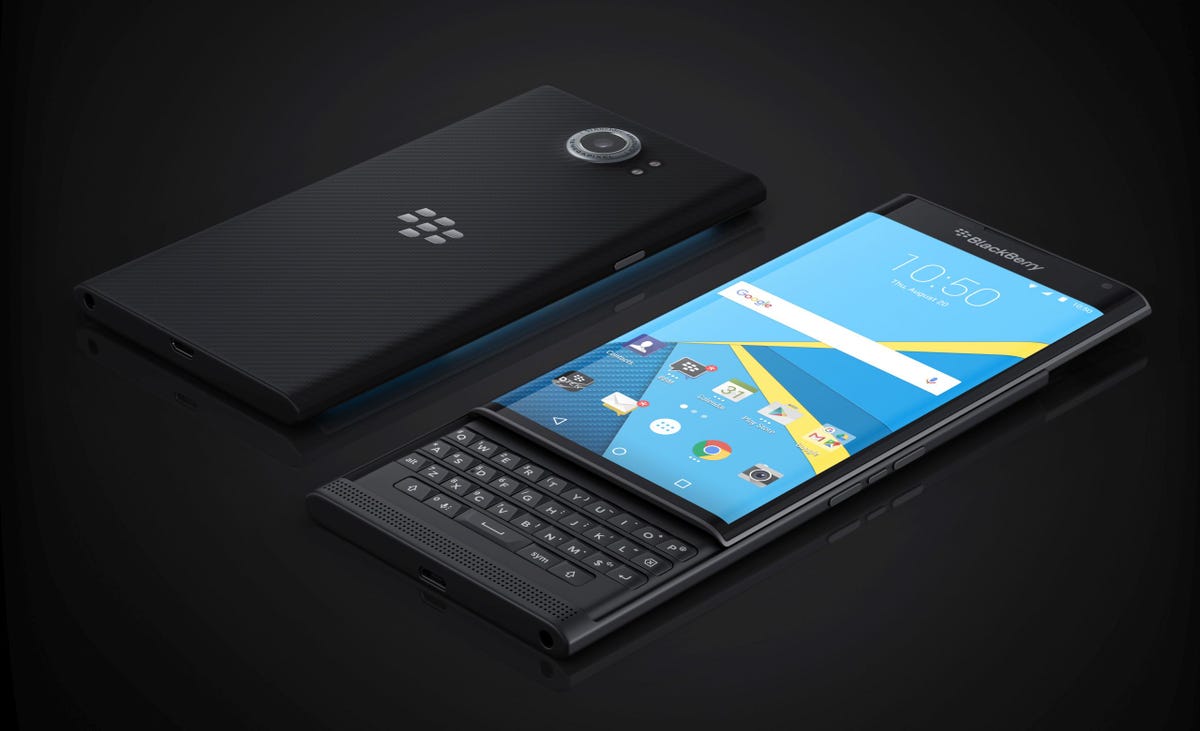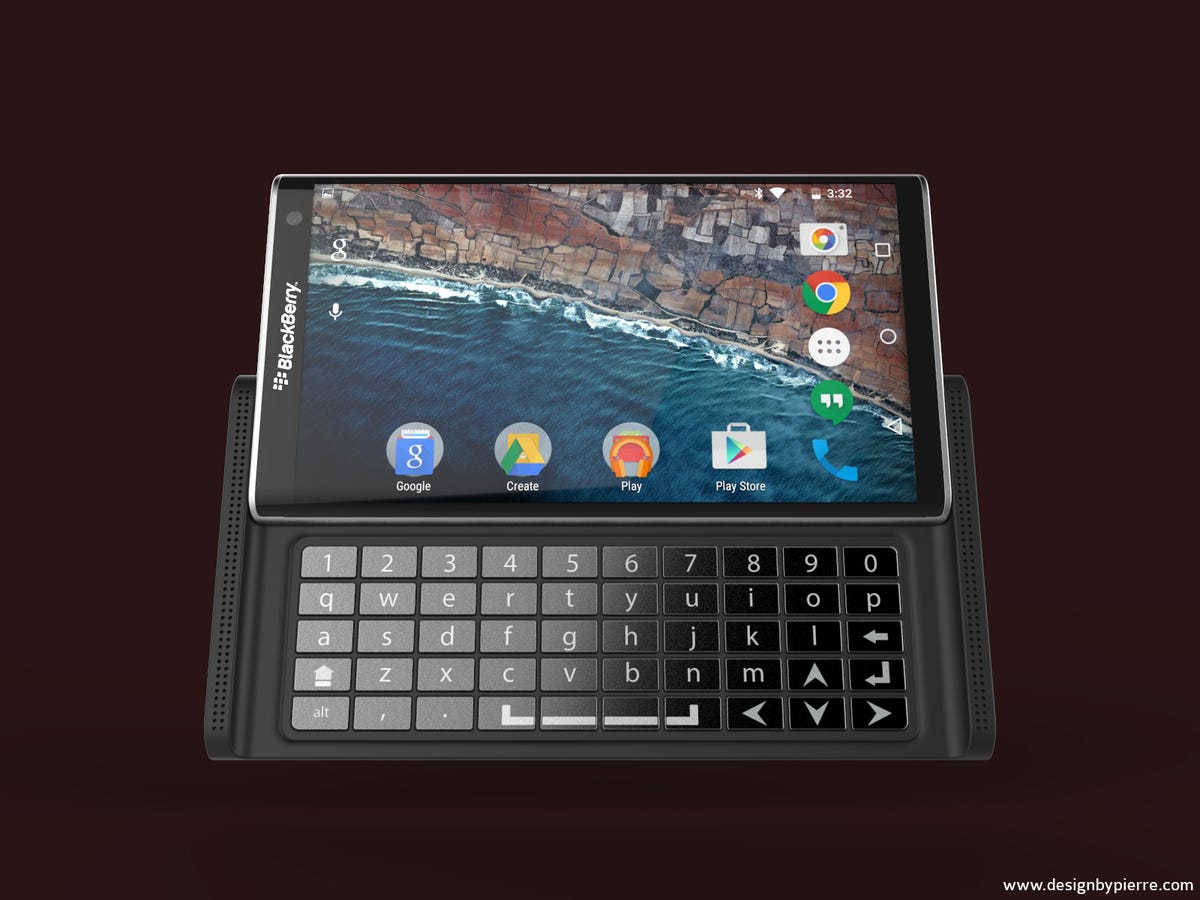The phone you see in the picture below doesn’t actually exist. It probably never will.
But it could.
Here’s how BlackBerry and Verizon Wireless could team up to build the phone of my dreams — and bring BlackBerry’s brand back from the brink of irrelevance.

 Enlarge Image
Enlarge ImageWe asked concept artist Pierre Cerveau to bring the BlackBerry Droid to life.
The BlackBerry Droid
Imagine if BlackBerry made a sleek, sophisticated phone that ran Android instead of BlackBerry OS. Imagine if it had a modern, spacious, curved and beautiful OLED screen instead of a tiny square. Imagine if it had a delightfully tactile carbon-fiber body, with that masculine style that we associate with Droid phones. Imagine if it had all that plus one of BlackBerry’s famous hardware keyboards.
Believe it or not, the phone I’m describing is already on sale. It’s called the BlackBerry Priv. You heard me right: you can already buy a modern BlackBerry phone that runs Android. I used the Priv for three whole months, and I can attest to three things: 1.) It’s a pretty good phone, 2.) Physical keyboards are still useful, and 3.) Most people have no idea the Priv exists.

 Enlarge Image
Enlarge ImageThe BlackBerry Priv.
BlackBerry
So I got to thinking: what could make that pretty good phone a great one? What would make people take notice?
One thing literally stuck out at me. The BlackBerry Priv’s tiny, cramped hardware keyboard — which can make the phone awkwardly long when you slide it out — could be replaced with the same kind of spacious, sliding landscape keyboard that made Motorola’s Droids so popular back in the day. Call it the BlackBerry Droid.
(I think a wide landscape keyboard would be easier to learn for today’s audience, too: I’ve lived with over a dozen phones with physical keyboards, and the ones that most closely replicate the wide layout of a computer keyboard have always been the easiest to get used to.)

 Enlarge Image
Enlarge ImageOriginally, I was thinking of staggered keyboard rows like Motorola’s Droid 4. But Pierre had an intriguing idea…
I mean, the phone already looks a lot like a Droid. It just needs that landscape keyboard, some Verizon branding (or not), maybe stereo speakers while we’re at it. (Having rubber grips on each side of the screen could make typing more comfortable.) It would probably be even easier to use than the Droids of yore thanks to the Priv’s curved screen, which has great viewing angles.
But the phone itself wouldn’t be the most important part of a BlackBerry-Verizon partnership. The reason the Droid was so incredibly successful was the marketing. Verizon has the immense marketing muscle that BlackBerry needs to get the word out that it still exists and has phones worth buying.

 Enlarge Image
Enlarge Image…what if the keyboard sat on top of a low-power E-Ink screen that showed you different keys for different apps?
BlackBerry and Verizon need each other
This is probably the point where you tell me that the name “Droid” belongs to Motorola, and Verizon already has plenty of Motorola Droids to sell. The Droid Mini, the Droid Maxx 2 and the incredibly durable Droid Turbo 2 are all pretty good phones.

 Enlarge Image
Enlarge ImageThe HTC Droid Incredible, from 2010.
HTC
But the truth is that Verizon is the one licensing the “Droid” name (remember HTC’s Droid Incredible and Droid DNA?) — and the future of the Motorola-Verizon partnership is no longer as certain as it used to be.
If you wanted Motorola’s best phones, Verizon used to be the only place you could buy them in the United States — and you’d probably be locked into a two-year contract once you sealed the deal. Now, we live in a world where you can buy a Moto X Pure Edition direct from Motorola for hundreds of dollars less than a Droid Turbo 2, then freely take it to any major cellular carrier.
Heck, you can buy international versions of the Droid Turbo 2 (called the Moto X Force) or Droid Maxx 2 (Moto X Play) without any of Verizon’s crufty preloaded software, and bring them to AT&T or T-Mobile these days. And now that Lenovo owns Motorola, it’s not likely that Moto’s international ambitions will lessen.
BlackBerry needs a win, and the Priv doesn’t seem to be it. Verizon needs a flagship phone that will stop its Android users defecting to the iPhone or rival cellular carriers. Channeling the combined nostalgia of Droid and BlackBerry fans into a single superphone could be the ticket.
This is the Droid I’m looking for.
Special thanks to Pierre Cerveau for his renders of the BlackBerry Droid. You can check out more of his work here.



